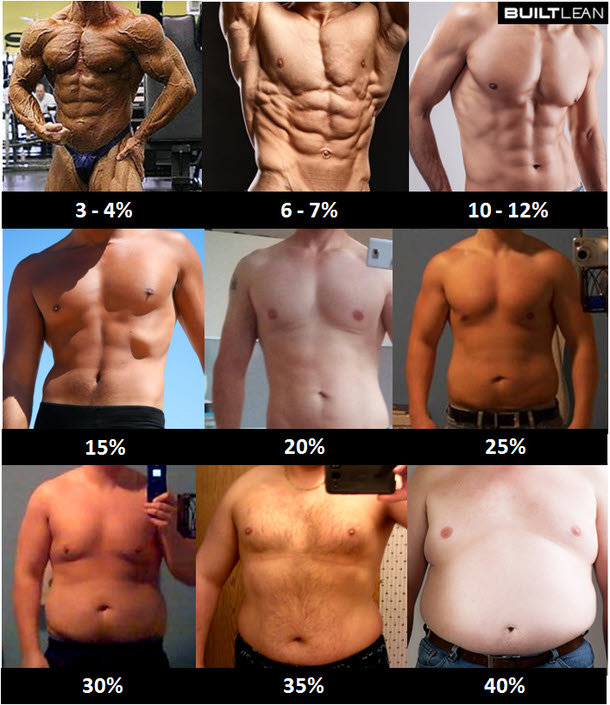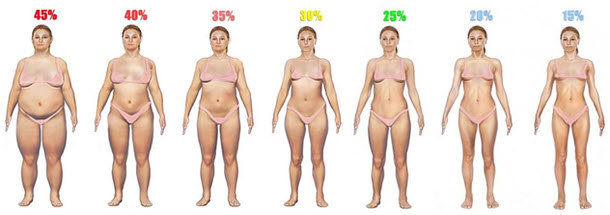It is so important not to chronically elevate GH and especially IGF-1. What follows is a summation of GH, how it acts, where it acts and its involvement in disease states.
Derived in part from patent filings of GH-receptor antagonists.
What is it?
Growth hormone (GH) is in its major form, a 22-kDa (22 kilodalton) protein consisting of 191 amino acids (in humans), and in its equally anabolic minority isoform, a 20-kDa protein consisting of the same structure with the deletion of 15 amino acids at positions 32 to 46 as well as dimers of these two forms, released by the pituitary and a member of a cascade of hormones that regulate the growth of the body and its organs. Various Fragments of the GH chain are also released and may undergo further cleavage into yet other fragments. The biological activity for most of the fragments are known yet their significance and "modes of action" remain to be elucidated.
Secretion of growth hormone into the bloodstream is followed by binding to growth hormone receptor (GHR) on many cell and organ types. Growth hormone signaling is initiated and mediated by this interaction. Growth hormone signaling brings about the production of another hormone, insulin-like growth factor-I (IGF-I or IGF-1), which is produced in the liver, adipose tissue and kidney and secreted into the bloodstream. About 75% of serum IGF-I is produced in the liver in response to growth hormone stimulation. Many disorders are caused by and/or associated with elevated growth hormone levels and/or elevated IGF-I levels in plasma and/or tissues including acromegaly, gigantism, retinopathy, macular degeneration, nephropathy, diabetes and cancers. The role of IGF-I in mediating many growth hormone effects is well recognized and the interrelationship is referred to as the growth hormone/insulin-like growth factor-I axis. In a normal feedback loop, IGF-I also causes the production of growth hormone by the pituitary to be reduced (i.e. negative feedback or inhibition).
Growth hormone is produced and secreted by a set of specialized cells in the anterior pituitary. Growth hormone has direct and indirect effects on many tissues, such as stimulating bone and soft tissue growth and influencing carbohydrate, protein, and lipid metabolism. Direct biological activities of growth hormone include receptor binding, internalization of the hormone/receptor complex, and activation of proteins involved in signal transduction.
GH Receptor
Protein and RNA transcripts for receptors of growth hormone (GHR) have been detected in many of the tissues influenced by the hormone. It was determined that a single molecule of growth hormone binds sequentially to two receptor molecules, forming an active complex. This complex, in turn, signals stimulation of other genes, including IGF-I. IGF-I, produced and secreted by the liver and other target tissues, mediates some of the indirect effects of growth hormone on growth and development. Other intracellular events occurring after the growth hormone/growth hormone receptor interaction include activation of tyrosine kinases such as Janus kinase 2 (Jak-2), which leads to phosphorylation and activation of other proteins including signal transducer and activator of transcription 5A and 5B (STAT 5A and 5B) and mitogen activated protein (MAP) kinase that, in turn, activate other proteins and genes.
The cDNA encoding the growth hormone receptor has been cloned from many species. The receptor consists of an extracellular hormone-binding region (exons 2-7), a single membrane spanning region (exon 8), and an intracellular region (exons 9-10). There are also multiple alternative 5' untranslated regions which are alternative first exons of the gene, in both the human and mouse transcripts. Growth hormone receptor has no intrinsic kinase domain, but the intracellular region plays a major role in the signal transduction process. A truncated form of the receptor, known as growth hormone binding protein (GHBP), lacks the transmembrane and intracellular regions of growth hormone receptor and is secreted into the serum. The truncated protein is produced by one of two different processes, depending on the animal species. In mice and rats, alternative splicing of growth hormone receptor precursor messenger RNA replaces the transmembrane and intracellular regions with a very short hydrophilic tail (encoded by exon 8A; 15, 16). In humans, cows, and pigs (among others), no alternative RNA splicing is apparent but instead the GHBP is produced by proteolysis of the growth hormone receptor. The function of the binding protein appears to be to modulate the level of circulating growth hormone.
Growth hormone receptor is expressed in many organs and tissues including liver, adipose tissue, muscle, cartilage, bone, tooth, kidney, eye, cardiovascular system, gut, reproductive organs, skin, brain, endocrine system and immune system.
The three-dimensional structure of the extracellular domain of growth hormone receptor has been established. It consists of two modules, each of about 100 amino acids, arranged as two sandwiches each with seven strands of beta-sheet. The secreted form of the extracellular domain of growth hormone receptor is the GHBP.
The growth hormone receptor is biologically responsive to growth hormone stimulation. JAK2 is the primary effector molecule for growth hormone receptor signaling. JAK2 is activated post growth hormone receptor dimerisation. When the growth hormone dimerizes its receptors, the JAKs are brought close together, and with proper alignment transphosporylate each other, leading to full activation. The intracellular targets for the JAKs include tyrosine residues in the receptor cytoplasmic domain itself, which in turn activate SH2 domains (STATS, She and SHP2). These may go on to activate the MAP kinase pathway, which regulates cell proliferation. JAK2 also phosphorylates and activates other signaling molecules, such as IRS-1 and -2 and phosphatidyl 3-inositol kinase, which are important parts of the insulin signaling mechanism and may account for the insulin-like actions of growth hormone. Activated JAK2 also phosphorylates STATS, and when activated, is involved in the transcription of a number of genes.
The Actions of GH Receptor Activation
Growth hormone receptor activation leads to many actions in many organs including the following outcomes in the following organs:
Liver:
Increased secretion of insulin-like growth factor-I,
synthesis of plasma proteins,
regulation of nitrogen balance enzymes,
increased carbohydrate synthesis/storage,
and increased fat breakdown;
Adipose Tissue:
Breakdown of fat stores;
Muscle:
Increased protein synthesis,
decreased protein breakdown;
Cartilage:
Increased height by increasing proliferation and differentiation of chondrocytes in growth plate;
Bone & Tooth:
Increased turnover of tissue, both synthesis and breakdown;
Kidney:
Increased sodium, bicarbonate and water retention;
Eye:
increased retinal neovascularization;
Cardiovascular:
Hypertrophy,
increased contractility,
stroke volume,
cardiac output;
Gut:
Hypertrophy,
increased amino acid, sodium, calcium, phosphate and B12 uptake;
Reproductive System:
Increased sperm production and motility,
increased accessory gland secretion in male,
increased number of follicles and ovulation rate,
increased follicular maturation rate,
increased milk production;
Skin:
Increased skin thickness and strength,
increased hair growth and thickness;
Brain:
Increased neuron proliferation and connectivity prenatally,
increased myelin formation,
improved long-term memory;
Endocrine System:
Increased insulin synthesis and secretion,
increased adrenal steroidogenesis;
Immune System:
Increased immune cell proliferation,
increased killing by monocytes, macrophages and NK cells,
increased antibody production
IGF-1
Downstream from growth hormone receptor in the growth hormone signaling pathway are IGF-I and IGF-I receptor. The insulin-like growth factors (IGFs) are important in proliferation. In particular, IGF-I and IGF-2 are ubiquitous polypeptides each with potent mitogenic effects on a broad range of cells. Molecules of the insulin-like growth factor type are also known as "progression factors" promoting "competent" cells through DNA synthesis. The insulin-like growth factors act through a common receptor known as the Type I receptor or IGF-IR, which is tyrosine kinase linked.
Particular proteins, referred to as insulin-like growth factor binding proteins (IGFBPs), appear to be involved in autocrine/paracrine regulation of tissue insulinlike growth factor availability (Rechler and Brown, Growth Regulation, 1992,2,55-68). Six IGFBPs have so far been identified. The exact effects of the IGFBPs are not clear and observed effects in vitro have been inhibitory or stimulatory depending on the experimental method employed. There is some evidence, however, that certain IGFBPs are involved in targeting insulin-like growth factor-I to its cell surface receptor. Also expression of IGFBP-3 is regulated by growth hormone.
The IGF-R is a tyrosine kinase linked cell surface receptor that regulates cell division, transformation and apoptosis in many cell types.
Disease states related to GH/IGF-1
If feedback regulation of growth hormone production is lost and the pituitary continues to release aberrant amounts of growth hormone, the level of insulin-like growth factor-I continues to rise, leading to bone growth and organ enlargement. The excess growth hormone also causes changes in sugar and lipid metabolism, which may lead to diabetes. Defects in the growth hormone signalling pathway often lead to abnormalities of stature and body and/or organ size. Mutations in the growth hormone receptor gene result in extreme short stature (Laron's syndrome). Excessive production of growth hormone can lead to acromegaly or gigantism.
Excess GH
Acromegaly and gigantism are related growth disorders wherein growth hormone excess, sometimes caused by pituitary tumor, causes progressive cosmetic disfigurement and systemic organ manifestations. It affects 40-50 per million people worldwide with about 15,000 sufferers in each of the US and Europe and an annual incidence of about 4-5 per million. It is initially characterized by abnormal growth of the hands and feet and bony changes in the facial features. Patients have reduced quality of life with overgrowth of the jaw, enlargement of hands and feet, deepening of the voice, thickening of skin, offensive body odor, articular cartilage problems, hyperphosphatemia, peripheral neuropathies, higher blood pressure, diabetes, heart disease, and cancer, and have a reduced life expectancy if untreated. The mortality rate is about twice that of the normal population due to cardiorespiratory and cardiovascular diseases, diabetes and neoplasia, particularly colon cancer. The goal of current treatment is to reverse the effects of the hypersecretion of growth hormone and normalize production of IGF-I which is elevated by about 50% in these patients. When effective, treatment moderates disease symptoms and disease-associated mortality.
Gigantism, the disease of excess growth hormone in children, is a rare disorder. In gigantism, excessive linear growth occurs whilst epiphyseal growth plates are open during childhood with growth hormone excess caused via a benign pituitary tumor. In both gigantism and acromegaly, all growth parameters are affected, although not necessarily symmetrically. Many of the growth related outcomes are mediated by elevated levels of serum IGF-I. Serum blood levels of IGF-I are elevated by about 50% in patients and reduction of serum IGF-I is used to monitor treatment
Treatments for acromegaly and gigantism involve the ability to lower the elevated IGF-I in plasma. This may be achieved by surgical removal and radiation therapy of the benign pituitary tumor but this is effective in only 50% of patients. Dopamine agonists such as bromocriptine mesylate or cabergoline may be dosed orally which is convenient but they only reduce growth hormone production and associated IGF-I sufficiently in 10% of cases. They also produce significant gastrointestinal and central side effects in 20-30% of patients. Also used in treatment of acromegaly are the somatostatin analogues such as Sandostatin or octreotide, which inhibit the release of growth hormone releasing hormone (GHRH) from the hypothalamus, and/or pituitary and thereby reducing production of growth hormone in the pituitary. This compound is effective in 60-65% patients with acromegaly but it must be injected under the skin every 8 hours or intramuscularly for effective treatment.
GHR Antagonist
Recently a growth hormone receptor antagonist, Trovert, also known as Somavert, Pegvisomant and B2036PEG, was shown in clinical trials to be effective in 90-95% of patients. Clinical trial experience to date shows a 10% drop-out rate and adverse effects such as liver dysfunction. Trovert is a growth hormone molecule with a 9 amino acid substitution with 4-5 pegylations to increase half life. Like all modified proteins it is immunogenic, with antibodies being made to Trovert within 1 month of dosing. This can impact Trovert's short and long term utility and makes dosing difficult to predict. Trovert was initially dosed once per month by subcutaneous (sc) administration, but current clinical practice suggests dosing will need to be once/day sc. Trovert interferes with growth hormone binding to its receptor but not the Growth Hormone Binding Protein (GHBP) fragment of the growth hormone receptor. GHBP binds growth hormone prolonging its action, which can be disadvantageous in conditions involving excess growth hormone and/or excess IGF-I. Pegylation may also impact on Trovert's long term safety profile.
Diabetes
Diabetes and its life threatening complications such as diabetic retinopathy and nephropathy are also disorders associated with growth hormone and/or IGF-I levels. First line treatment of these conditions involves controlling hyperglycemia. Drugs that control diabetes reduce the incidence of nephropathy by 60% and also reduce the incidence of retinopathy. However, about half of all diabetics are unaware of disease and therefore remain untreated, so diabetic nephropathy and retinopathy are likely to remain a major condition requiring other treatments. In retinopathy surgical ablative treatments such as laser pan-retinal photocoagulation are used but these remain incompletely effective and destroy retinal tissue, causing partial vision field loss. In type I diabetics ACE and All inhibitors decrease albuminuria excretion by acting on the kidney and in Type II diabetics the same inhibitors act locally on kidney and also decrease blood pressure to reduce the risk of death from kidney failure by another 50%. However, 20-30% of patients remain resistant to treatment with current glycemic control drugs and ACE drugs. There is thus a need for better treatments.
The underlying cause of diabetes, diabetic retinopathy and diabetic nephropathy may be insulin related hyperglycemia, but growth hormone and/or insulin-like growth factor-I excess is also important. Octreotide inhibitors of GHRH that decrease production of pituitary growth hormone, reducing systemic levels of growth hormone and IGF-I, and/or modulating local tissue levels show potential in the clinic. A study with octreotide by Grant et al., Diabetes Care, 2000, 2, 504-9) reducing sIGF-1 by 51% at maximally tolerated doses of octreotide 5000 ,Mg/day sc reduced the need for laser surgery in retinopathy patients to 1 patient out of 22 rather than 9/22 in placebo in a 15 month study. Also ocular disease was reduced to 27% vs placebo of 42% bordering on significance (P 0.06). Three human studies using octreotide at levels that reduced sIGFl 45%, about 20% and about 10% respectively were at least partly effective in clinical trials of nephropathy. The outcome reported by Serin et al. (JAMA, 1991, 265, 888-92) with 11 patients used high doses of octreotide in a 12 week study that reduced serum IGF-I by 45%. At the time it was stated to be the best effect observed on reducing glomerular filtration rate with a 22-33% reduction relative to placebo. This dose, however, was near maximally tolerated doses of octreotide.
Animal pathology model studies with octreotide and Trovert also support the view that agents that modulate the growth hormone/insulin-like growth factor-I axis are beneficial in the treatment of these diabetic conditions. Growth hormone and its receptor are implicated in the induction of glomerular hypertrophy and sclerosis in partial nephrectomy and diabetic nephropathy with somatostatin inhibitors octreotide and PTR-3173 (Groenbaek et al., /. Endocrinol, 2002, 172, 637-643 and Landau et al, Kidney International, 2001, 60, 505-512) and growth hormone receptor antagonist, G120K-PEG, a weaker version of Trovert, preventing complications in type I and Type II diabetic mice (Chen et al, Endocrinology, 1996,137, 11, 5136-5165; Flyvbjerg et al, Diabetes, 1999, 40,377-382, and Segev et al., /. Am. Soc. Nephrol. 1999, 10,2374-81). Growth hormone and its receptor are implicated in the induction of retinal neovascularization through IGF-I with somatostatin inhibitors octreotide and growth hormone receptor antagonist MK678, inhibiting retinal neovascularization in mice. MK678 reduction of neovascularization correlated with low serum IGF-I (Smith et al, Science, 1997, 276, 1706-9). Oxygen induced retinopathy in the mouse was also responsive to octreotide as reported by Higgins et al.,Exp. Eye Res, 2002, 74,553-9.
Macular Degeneration
Macular degeneration is also associated with elevated growth hormone and/or IGF-I levels. Age-related macular degeneration (AMD) is caused by deterioration of the central part of the retina, the macula, resulting in loss of detailed vision. Wet AMD, the less common form, is caused by leakage from new blood vessels growing behind the retina. The growth hormone/IGF-I axis is involved in formation of new blood vessels relevant to this condition and to diabetic retinopathy.
Cancer
Various cancers are also associated with aberrant growth hormone and/or IGF-I levels. Reduction of serum IGF-I by 20-50% using Trovert decreased tumor volume in breast cancer in animal models and helped in colon cancer, liver metastasis, and meningiomas (Friend et al, Proceedings llth NCI EORTC. AACR Symposium and Friend, Growth Harm. IGF Res., 2001, Jun: 11 Suppl A: S121-3). The incidence of breast, colon, prostate, and lung cancer is increased in individuals in the high normal range of serum IGF-I. There have been no clinical studies with Trovert in cancers. However, octreotide is indicated for gastro-pancreatic cancers.
Longevity
Longevity may also be improved with modulation of growth hormone receptor (Coschigano et al., Endocrinology, 2000, 141, 2608-2613). There was a significant increase in lifespan of nearly a year in double knockout animals with low levels of IGF-I and high levels of growth hormone.
Inhibition of Neuronal Differentiation
Another application to modifying levels of growth hormone and/or IGF-I via the growth hormone receptor may enable stem cell differentiation towards neural cell production as growth hormone inhibits neuronal differentiation of neural progenitor cells (Turnley et al., Nature Neuroscience, 1 Oct. 2002, published online).
Although the underlying roles in various disease or conditions may be different, the above conditions arise at least in part from incorrect levels of expression of local and/or systemic growth factors growth hormone and IGF-I and/or their receptors growth hormone receptor and IGF-R. In these situations, dopamine agonists, somatostatin antagonists, and growth hormone receptor antagonists targeting the proteins have been used and/or shown potenial
In reference to DatbTrue

SimonMacMichael.jpg.43c0ea0f7feb7cf18b460c43173eeaec.jpg)






